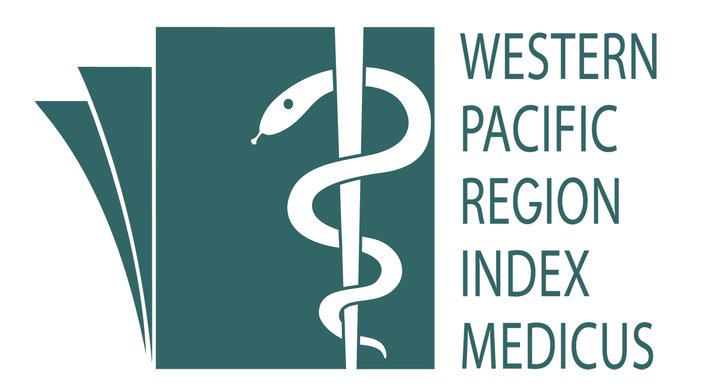Development of Physical Training Program to Boost Functional Strength in Firefighter Recruits Using a Modified Nominal Group Technique
Keywords:
Firefighter recruits, Physical exercise, functional movements and strength, modified nominal group techniqueAbstract
Introduction:
A series of comprehensive focus group discussions with active firefighters revealed that inconsistencies in incorporating a rigorous physical training program during work hours contributed significantly to the challenges in maintaining functional fitness, particularly strength. This article outlines a process to identify the specific exercises required to enhance strength, drawing on the expertise and experience of physical trainers.
Methods:
Modified nominal group technique (mNGT) sessions were conducted to identify and rank exercises for five functional strengths (i.e., pushing, pulling, lifting, carrying, and dragging). A total of six physical trainers from the firefighter academy were interviewed to 1) identify the skeletal muscles involved in the functional movements using a visual aid; 2) generate ideas for exercises via brainstorming; 3) privately rank the displayed list of exercises for each muscle group involved in each functional movement; and 4) design a physical training programme for beginner, intermediate and advanced levels by manipulating loads.
Results:
Males dominated the expert group (66.7%) and had a mean of 11.50 (SD 5.20) years of experience in physical training. The mNGTs yielded three top-ranking exercises for each functional strength: 1) Pushing: the push-up, sit-up, and jumping jack; 2) pulling: the push-up, jumping jack, and sit-up; 3) lifting: the jumping jack, push-up, and jumping squat; 4) carrying: the push-up, plank, and sit-up; and 5) dragging: the jumping jack, sit-up, and jumping squat. Then each exercise was designed for the beginner, intermediate, and advanced levels by manipulating loads (i.e. additional weight or number of repetitions).
Conclusions:
This study demonstrated that mNGT is an effective tool for identifying the three top-ranking exercises that address firefighter recruits’ functional strength. The experts chose multi-joint exercises targeting agonist and antagonist skeletal muscle groups and mimicking movements of daily work life. The exercises, corroborated by previous empirical evidence, provide opportunities for common skeletal muscle groupings to be targeted simultaneously to increase cardiovascular adaptations over a shorter period. The physical exercise is now ready to be implemented for piloting purposes among firefighter recruits.
References
Kerrigan D, Moss J. Firefighter Functional Fitness : The Essential Guide for Optimal Firefighter Performance & Longevity [Internet]. 1st ed. Murphy P, Jahnke SA, Moore K, editors. United States of America: Firefighter Toolbox LLC; 2016 [cited 2024 Jan 28]. 319 p. Available from: https://books.google.com/books/about/Firefighter_Functional_Fitness.html?id=u8ibjwEACAAJ
Feto Y, Fountaine C. General Principles of Exercise Prescription. In: Liguori G, Feito Y, Fountaine C, Roy B, editors. ACSM’S Guidelines for Exercise Testing and Prescription. 11th ed. Wolters Kluwer; 2022. p. 142–66.
Kerrigan D, Moss J. Firefighter Functional Fitness: The Essential Guide to Optimal Firefighter Performance and Longevity. Murphy P, editor. USA: Firefighter Toolbox LLC; 2016. 319 p.
AL Busafi M. The Importance of Physical Fitness Programs for Firefighters. J Phys Educ. 2021 Jun;33(2):171–6.
Bushman B. Improving your aerobic fitness. In: Bushman B, editor. Complete Guide to Fitness and Health. 2nd ed. USA: American College of Sports Medicine; 2017. p. 79–100.
Noor Dalila Inchi Zainal Abidin. Firefighter Functional Fitness: Issues and Solution. Kuala Lumpur; 2024.
Perintah Tetap Ketua Pengarah. Perlaksanaan Ujian Individual Physical Proficiency Test. Vol. Bil 2, Fire and Rescue Department of Malaysia. 2014. p. 22.
National Fire Protection Association. NFPA code 1582: Standard on Comprehensive
Occupational Medical Program for Fire Departments. US; 2021.
O’Connell ER, Thomas PC, Cady LD, Karwasky RJ. Energy costs of simulated stair climbing as a job-related task in fire fighting. J Occup Med. 1986;28:282–4.
Ainsworth B, Haskell W, Herrmann S, Meckes N, Bassett D, Tudor-Locke C, et al. 2011 Compendium of Physical Activities. Med Sci Sport Exerc. 2011 Aug;43(8):1575–81.
Kollock R, Thomas J, Hale D, Sanders G, Long A, Dawes J, et al. The Effects of Firefighter Equipment and Gear on the Static and Dynamic Postural Stability of Fire Cadets. Gait Posture. 2021 Jul;88(4):292–6.
Dunham RB. Nominal Group Technique: A Users’ Guide. 1988.
Wiggins ST, Colby S, Moret L, McElrone M, Olfert MD, Riggsbee K, et al. A modified nominal group technique (mNGT)-finding priorities in research. Am J Health Behav. 2020;44(3):345–52.
Ebben WP, Wurm B, Vander Zanden TL, Spadavecchia ML, Durocher JJ, Bickham CT, et al. Kinetic Analysis of Several Variations of Push-Ups. J Strength Cond Res. 2011 Oct;25(10):2891–4.
Kikuchi N, Nakazato K. Low-load bench press and push-up induce similar muscle hypertrophy and strength gain. J Exerc Sci Fit [Internet]. 2017;15(1):37–42. Available from: http://dx.doi.org/10.1016/j.jesf.2017.06.003
Topend Sport Network. Push Up. 2023.
Yang J, Christophi CA, Farioli A, Baur DM, Moffatt S, Zollinger TW, et al. Association between Push-up Exercise Capacity and Future Cardiovascular Events
among Active Adult Men. JAMA Netw Open. 2019;2(2):1–11.
Fisher J, Steele J, Bruce-Low S, Smith D. Evidence-Based Resistance Training Recommendations. Med Sport. 2011 Sep;15(3):147–62.
Yi Rong Tan, Farid Wajdi Mahyuddin, Norhayati Mahyuddin. MATEC Web of Conferences. In: The analysis of fire losses and characteristics of residential fires based on investigation data in Selangor, 2012-2014. 2016.
Lindberg AS, Oksa J, Antti H, Malm C. Multivariate Statistical Assessment of Predictors of Firefighters’ Muscular and Aerobic Work Capacity. Piacentini MF, editor. PLoS One. 2015 Mar;10(3):e0118945.
Songsorn P, Somnarin K, Jaitan S, Kupradit A. The effect of whole-body high-intensity interval training on heart rate variability in insufficiently active adults. J Exerc Sci Fit [Internet]. 2022;20(1):48–53. Available from: https://doi.org/10.1016/j.jesf.2021.10.003
Fang SC, Wu YL, Tsai PS. Heart Rate Variability and Risk of All-Cause Death and Cardiovascular Events in Patients With Cardiovascular Disease: A Meta-Analysis of Cohort Studies. Biol Res Nurs. 2020 Jan;22(1):45–56.
Herrmann SD, Willis EA, Ainsworth BE, Barreira T V., Hastert M, Kracht CL, et al. 2024 Adult Compendium of Physical Activities: A third update of the energy costs of human activities. J Sport Heal Sci. 2024 Jan;13(1):6–12.
Kruskall L. Weight Management. In: Bushman B, editor. Complete Guide to Fitness and Health. 2nd ed. USA: American College of Sports Medicine; 2017. p. 351–68.
Speakman JR. Obesity and thermoregulation. Handb Clin Neurol. 2018;156:431–43.
Mathias KC, Wu Y, Stewart DF, Smith DL. Differences in 5-year weight change between younger and older US firefighters. BMC Public Health. 2021 Dec;21(1):1215.
Witzke K, Winters-Stone K. Osteoporosis and Bone Health. In: Bushman B, editor. Complete Guide to Fitness and Health. 2nd ed. USA: American College of Sports Medicine; 2017. p. 321–38.
Welle S, Thornton C, Jozefowicz R, Statt M. Myofibrillar protein synthesis in young and old men. Am J Physiol Metab. 1993 May;264(5):E693–8.
Institute of Medicine (US) Committee on Assessing the Need for Clinical Trials of Testosterone Replacement Therapy. Testosterone and Aging. In: Liverman C, Blazer D, editors. Clinical Research Direction. Washington (DC): National Academies Press (US); 2004.
Volpi E, Nazemi R, Fujita S. Muscle tissue changes with aging. Curr Opin Clin Nutr Metab Care [Internet]. 2004 Jul;7(4):405–10. Available from: http://journals.lww.com/00075197-200407000-00009
Tieland M, Trouwborst I, Clark BC. Skeletal muscle performance and ageing. J Cachexia Sarcopenia Muscle. 2018 Feb;9(1):3–19.
Downloads
Published
How to Cite
Issue
Section
License
Copyright (c) 2025 Noor Dalila Inche Zainal Abidin, Rosnah Ismail, Asnarulkhadi Abu Samah, Nor Hisham Mohammad, Abdul Khair Osman, Ismail Abdul Ghani, Ashrul Riezal Asbar

This work is licensed under a Creative Commons Attribution-NonCommercial 4.0 International License.
IJPHR applies the Creative Commons Attribution (CC BY) license to articles and other works we publish. If you submit your paper for publication by IJPHR, you agree to have the CC BY license applied to your work. Under this Open Access license, you as the author agree that anyone can reuse your article in whole or part for any purpose, for free, even for commercial purposes. Anyone may copy, distribute, or reuse the content as long as the author and original source are properly cited. This facilitates freedom in re-use and also ensures that IJPHR content can be mined without barriers for the needs of research.






